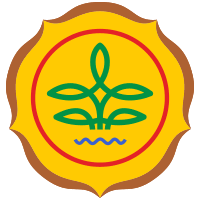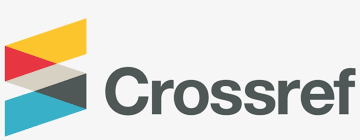Test the potensial use of Trichoderma harzianum Rifai and Gliocladium virens Arx fungi to control leaf spot disease in cayenne pepper (Capsicum frutescens L.)
Abstract
Keywords
Full Text:
PDFReferences
Agrios, G. N., 1996. Ilmu Penyakit Tumbuhan. Gadjah Mada University Press, Yogyakarta.
Alexopulos, C. J., and C. W, Mims. 1979. Introductory Mycology. Libary of Congres Cataloging in Publication Data, United States of America.
Badan Pusat Statistik. 2011. Production of Fruits in Indonesia. Biro Pusat Statistik, Jakarta. Hal: 34-35.
Dinas Pertanian, 2010. Kompos. http://www.sinartani.com/. 27 September 2010.
Djafaruddin. 2008. Dasar-Dasar Pengendalian Penyakit Tanaman. Penerbit Bumi Aksara, Jakarta.
Elad, Y. and A, Kapat. 1999. The Role of Trichoderma harzianum Protease in The Biocontrol of Botrytis Cinerea. Eur. J. Plant Pathol. Vol 105: 177-189
Rivai, F. 2005. Kehilangan Hasil Akibat Penyakit Tumbuhan. Andalas University Press, Padang.
Semangun, H. 2000. Penyakit-Penyakit Tanaman Hortikultura di Indonesia. Gadjah Mada University Press, Yogyakarta. Page: 32-35.
Setiadi. 2004. Bertanam Cabai. Penebar Swadaya, Jakarta.
Surya sila, Sopialena. Efektifitas Beberapa Fungisida terhadap Perkembangan Penyakit dan Produksi Tanaman Cabai (Capsicum Frutescens). Jurnal Agrifor Vol 15(1): 117-130
Sopialena, Palupi, PJ. Study of climatic factors on the population dynamics of Pyricularia oryzae on some varieties of paddy rice (Oryza sativa). Biodiversitas 18(2):701-708
Sopialena, Rosfiansyah, Surya Sila. The benefit of top soil and fertilizer mixture to improve the ex-coal mining land. Nusantara Bioscience 9(1):36-43
Sopialena. Kajian faktor iklim terhadap dinamika populasi pyricularia oryzae pada beberapa varietas padi sawah (Oryza sativa). Agrifor 14(2): 245-260
Sudiono, N, Yasin., S, Hendrastuti dan P, Hidayat.2005. Penyebaran dan Deteksi Molekuler Virus Gemini Penyebab Penyakit Kuning pada Tanaman Cabai di Sumatera. Jurnal Hama dan Penyakit Tumbuhan Tropika, Sumatera Vol 5 (2): 113-121.
Suharna, N. 2003. Interaksi Antara Trichoderma harzianum, Penicillium sp. dan Pseudomonas serta Kapasitas Antagonismenya terhadap Phytophthora capsici in Vitro. Beritabiologi Vol 6(6): 747-753.
Susiana, P., R.S. Ferniah, dan B. Raharjo. 2008. Pengendalian Penyakit Lodoh (Busuk Umbi Kentang dengan Agen Hayati Jamur-Jamur Antagonis Lokal.
Bioma. Vol 10(2): 13-19.
Syukur, M., S, Sujiprihati., J, Koswara., dan J, Widodo. 2009. Ketahanan Terhadap Antraknosa yang Disebabkan oleh Colletotrichum acutatum pada Beberapa Genotipe Cabai (Capsicum annuum L.) dan Korelasinya dengan Kandungan Kapsaicin dan Peroksidase. Jurnal Agronomi Indonesia. Vol 37(3): 233-239.
DOI: http://dx.doi.org/10.35941/jatl.1.1.2018.1511.61-66
Refbacks
- There are currently no refbacks.
Copyright (c) 2018 Agroekoteknologi Tropika Lembab







4.jpg)
.jpg)











